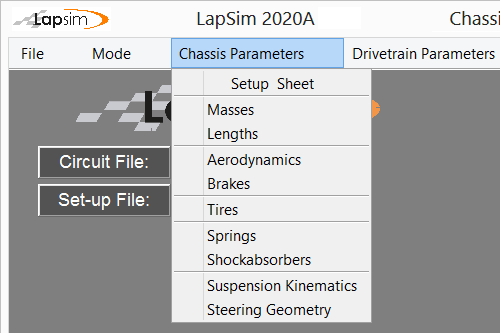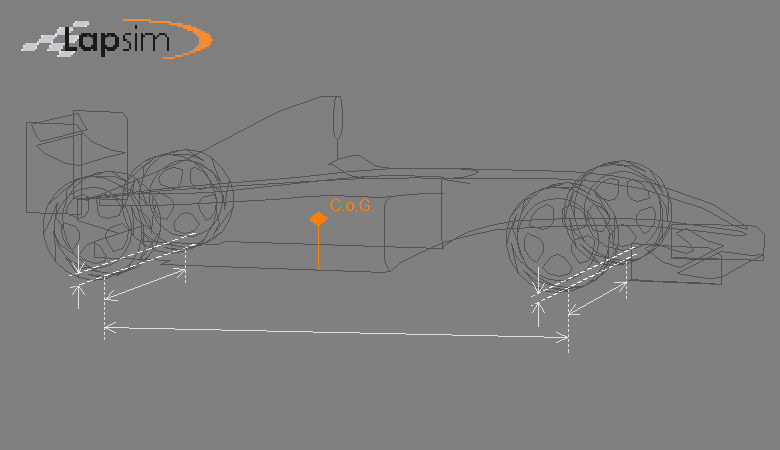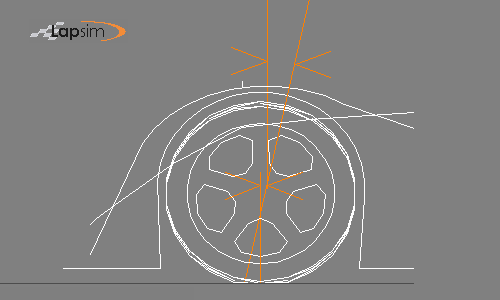Overview of all the chassis variables of the model

Under the Chassis Parameter menu the parameter menu you want to alter can be selected.
Each parameter menu is described on an individual web page, which will give you more information about the influence of the parameters in this specific menu as well as an explanation about special features which are programmed in LapSim.
Specifying masses, inertia and weight distribution
In the masses menu the overall weight as well as individual masses and weight distribution are specified.
Furthermore several mass moment of inertia's are specified in the menu.
Defining the several lengths of the vehicle
The lengths menu enables the user to specify all the length parameters of the vehicle.
These parameters determine the weight transfer due to lateral and longitudinal accelerations.
Influence of the aerodynamic forces on the vehicle
The complexity of the aerodynamics of the model are very scalable.
From constant coefficients, to full rideheight and wing dependent aeromaps.
Specifying brake force distribution
In the brakes menu, one specifies the brake balance. In addition one can specify a reduction valve for the brake force to the rear wheels.
Next to that, there is the option to make the brake balance variable, optimal to the momentary vehicle state. Similar like ABS
Defining the compliance of the suspension
In the spring menu, one can specify the spring configuration. Single, normal of triple lay-out.
With, or without a helper spring.
Specify the bumpstops characteristic for each spring, as well as a rebound limiter.
Only for the dynamic model, not for the lap simulation
In the shockabsorber menu one defines up to 5 shock characteristics.
Please be aware that the shockabsorber characteristics are only used in the dynamic modelling part, not in the lap simulation.
Based on a simplified Pacejka model
Tires are a very essential part of the simulation.
LapSim uses a much simplified Pacejka model, whose functioning is described on this page.
Inputs are vertical load, camber, longitudinal and lateral slip.
Defining the checking forces of the suspension
The suspension characteristics define the amount of supporting force on the vehicle body, generated by the lateral and longitudinal tire forces.
Next to that, one can specify the camber of the wheels, in relation to the suspension travel.
Relationship between steerangle and wheel position
In the steering menu, one specifies the steering geometry of the vehicle.
This determines the influence of the steer angle on camber as well as corner weights.








